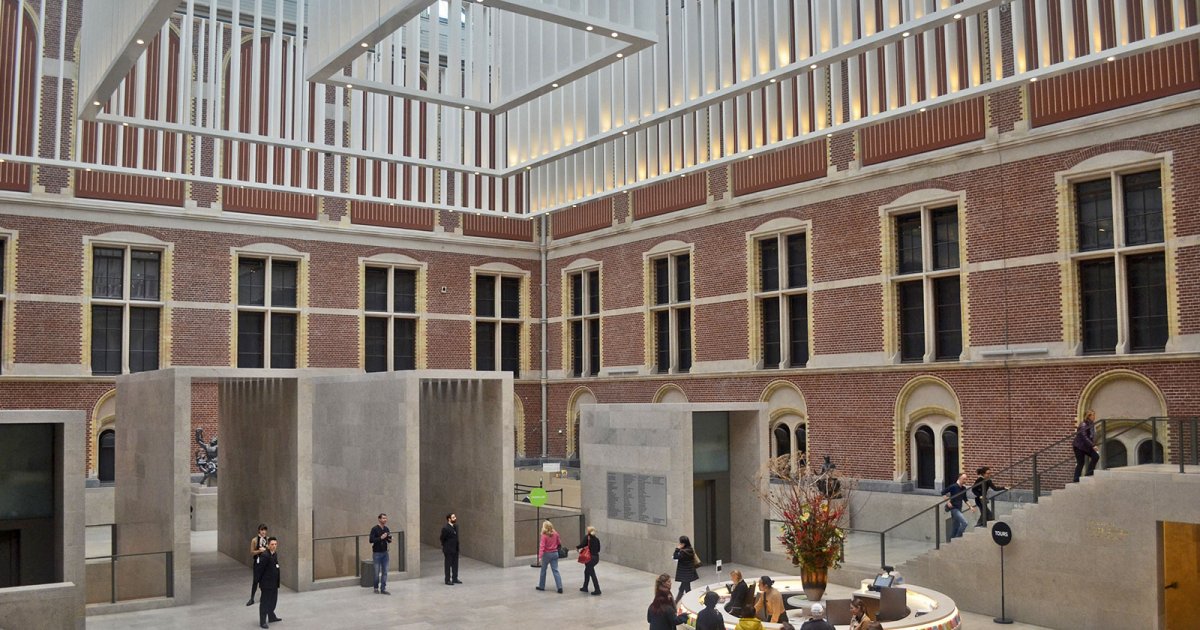RIJKSMUSEUM , Tour
 Language: English / USA
Language: English / USA
The visit to the Rijksmuseum follows a chronological order, starting from the strikingly displayed works in the basement, covering the period from the Middle Ages to the Renaissance.
At the start of the exhibition route, you’ll find, above all, sculptures from the Romanesque and Gothic periods, as well as gold jewelry, fine fabrics and elegant handicrafts in ivory.
When you reach the 15th century area, you’ll find works by fine Dutch painters, side-by-side with those by Italian painters.
The collection also includes some superb bronze statuettes from the 1467 monument to Isabella of Bourbon, a marvelous example of fine workmanship, as well as a stirring historical illustration of the sophisticated fashions of the time.
This area is followed by a large section on the Renaissance. Among the paintings from the 16th century, don’t miss the portrait by Paolo Veronese of the Venetian bishop and intellectual Daniele Barbaro.
At the end of this section, you’ll find the first examples of still life painting and paintings dedicated to scenes from everyday life, which were to become very popular in the century that followed.
The visit continues on the second floor where, in addition to the gallery of honor featuring works by Rembrandt and Vermeer – which I’ll be telling you about in the later files – you can admire numerous rooms displaying a rich overview of Dutch culture in the Golden Age, including paintings, furniture, silverware, tapestries and everyday objects.
The chronological visitor route continues with the rooms on the first floor, covering the 18th and 19th centuries and enriched with a marvelous section dedicated to ceramics and porcelain. Among the numerous paintings and elegant furnishings, make sure you take a moment to admire the splendid portrait of Don Ramón Satué by the world-famous Spanish painter Francisco de Goya, and a self-portrait by Vincent Van Gogh.
Finally, the third floor is dedicated to the 20th century, with works by Dutch artists and themed sections devoted to design, clothing and everyday technology.
An interesting fact: make sure you don’t miss the doll’s house of Petronilla Oortman, crafted around 1700, an extraordinary miniature home, two and a half meters tall and created in painstaking detail using rare, precious materials. The owner was not a child, but the wife of a rich fabric merchant of Amsterdam. After The Night Watch by Rembrandt, this is the best-known and best-loved exhibit in the museum.



